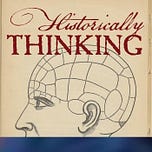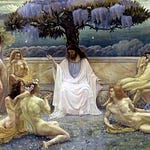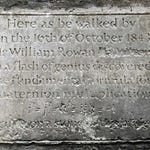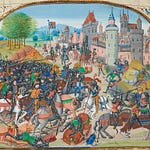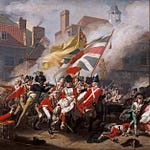Originally published on June 19, 2023 (Episode 321)
Introduction
On April 9, 1865, when Ulysses S. Grant accepted the surrender of Robert E. Lee at Appomattox, one of his staff officers was Ely S. Parker—a man who, at the time, was not even recognized as a U.S. citizen. Parker, a Lieutenant Colonel in the Union Army and a trained engineer, also happened to be Sachem of the Six Nations of the Iroquois, or Haudenosaunee. It was Parker who drafted the official copy of the surrender terms signed by Grant and Lee.
Parker’s life was one chapter in a much longer story of Native leaders who shaped both the identity of the Six Nations and the state of New York itself. He followed in the footsteps of his uncle, Red Jacket, and was later succeeded by his friend and adopted Seneca tribe member Harriet Converse, as well as his nephew Arthur Parker. Together, these figures contributed to what Arthur Parker once described in a ten-volume unpublished manuscript as “the amazing Iroquois.”
Historian John C. Winters traces their intertwined stories in The Amazing Iroquois and the Invention of the Empire State (Oxford University Press, 2023). Our conversation explores how these leaders navigated politics, self-representation, and cultural survival, leaving a profound legacy in both Native and American history.
About the Guest
John C. Winters is Assistant Professor of History at the University of Southern Mississippi. His research focuses on Native American history, identity, and cultural politics in the 19th and early 20th centuries. The Amazing Iroquois and the Invention of the Empire State is his first book.
For Further Investigation
John C. Winters, The Amazing Iroquois and the Invention of the Empire State (Oxford University Press, 2023)
Related Episodes
Dean Snow on Native archaeology and the Haudenosaunee in Long Walk
Jim Horn on the Powhatan leader Opechancanough in A Brave and Cunning Prince
Jane Simonsen on Native self-representation in What Black Hawk Wore
Red Jacket’s Peace Medal returned to Seneca Nation after 116 years at Buffalo museum
Arthur C. Parker, Seneca Myths and Folktales (Buffalo Historical Society, 1923)
💬 Listen & Discuss
How did Red Jacket, Harriet Converse, and Arthur Parker each contribute to reshaping perceptions of the Iroquois? How does Winters’s story of the Iroquois challenge or enrich the traditional narrative of New York State history? Share with a New York friend, or anyone interested in Native American History.

